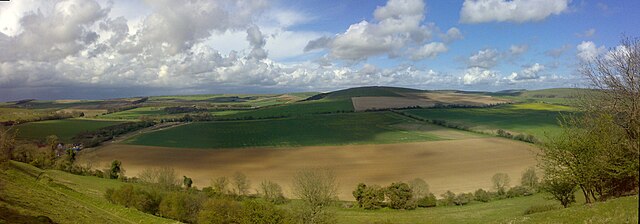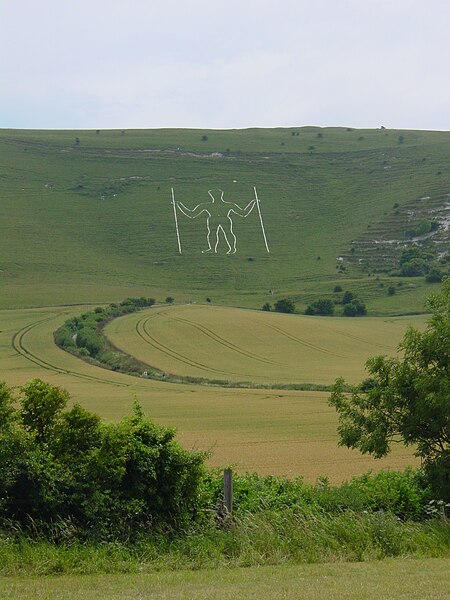Weald Clay or the Weald Clay Formation is a Lower Cretaceous sedimentary rock unit underlying areas of South East England, between the North and South Downs, in an area called the Weald Basin. It is the uppermost unit of the Wealden Group of rocks within the Weald Basin, and the upper portion of the unit is equivalent in age to the exposed portion of the Wessex Formation on the Isle of Wight. It predominantly consists of thinly bedded mudstone. The un-weathered form is blue/grey, and the yellow/orange is the weathered form, it is used in brickmaking.
Weald Clay exposed at Clock House Brickworks
Bored exposure of the lower Weald Clay on the shore near Cooden Beach
Iguanodon
Leptocleidus
The South Downs are a range of chalk hills in the south-eastern coastal counties of England that extends for about 260 sq mi (670 km2) across the south-eastern coastal counties of England from the Itchen valley of Hampshire in the west to Beachy Head, in the Eastbourne Downland Estate, East Sussex, in the east. The Downs are bounded on the northern side by a steep escarpment, from whose crest there are extensive views northwards across the Weald. The South Downs National Park forms a much larger area than the chalk range of the South Downs, and includes large parts of the Weald.
The Seven Sisters, near Eastbourne, viewed from Seaford Head
The dip slope of the South Downs, as seen from Angmering Park Estate near Arundel (panoramic view)
Plan of Cissbury fort showing shafts
The Long Man of Wilmington, inscribed into the scarp face of the South Downs in East Sussex








